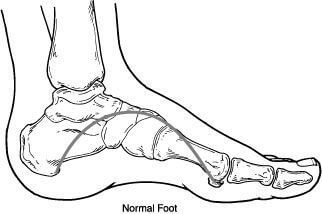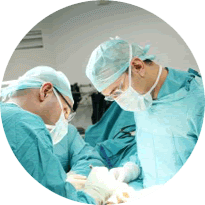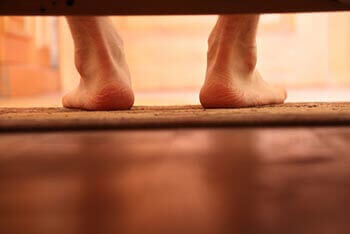bfdadmin
Dr. Timothy Young Discusses Shockwave Therapy for Achilles Tendonitis: A Promising Treatment Option
Introduction
Achilles tendonitis is a common and painful condition that affects the Achilles tendon, the thick cord that connects the calf muscles to the heel bone. This condition often results from overuse or repetitive stress, causing pain, swelling, and stiffness in the back of the ankle. While conservative treatments like rest, physical therapy, and anti-inflammatory medications can help manage Achilles tendonitis, some cases may require more advanced interventions. Shockwave therapy is one of the newer treatment options for resistant Achilles tendonitis.
In this blog post, I will discuss what shockwave therapy is, how it works, its benefits, and its effectiveness in treating Achilles tendonitis.
What is Shockwave Therapy?
Shockwave therapy, also known as extracorporeal shockwave therapy (ESWT), is a non-invasive medical procedure that uses high-energy acoustic waves to stimulate healing and tissue repair. Originally developed to break down kidney stones, this technology has found its place in sports medicine, offering a promising alternative for various musculoskeletal conditions, including Achilles tendonitis.
How Does Shockwave Therapy Work?
Shockwave therapy works by delivering high-energy sound waves to the affected area, creating microtrauma within the damaged tendon. This microtrauma triggers the body's natural healing response, increasing blood flow, promoting collagen production, and stimulating tissue regeneration. In the case of Achilles tendonitis, shockwave therapy targets the degenerated tissue and encourages the formation of healthy tendon fibers.
Benefits of Shockwave Therapy for Achilles Tendonitis
1. Non-Invasive: Shockwave therapy is a non-surgical and non-invasive treatment option, making it suitable for patients who want to avoid surgery or those who have not responded well to conservative treatments.
2. Reduced Pain: Many patients experience a significant reduction in pain after shockwave therapy, which can improve their overall quality of life and enable them to return to their normal activities.
3. Accelerated Healing: Shockwave therapy accelerates the natural healing process by promoting tissue repair and regeneration, allowing patients to recover faster.
4. Minimal Side Effects: Compared to surgery, shockwave therapy carries fewer risks and side effects. It generally has a much shorter recovery time and does not require a lengthy rehabilitation period.
Effectiveness of Shockwave Therapy
Numerous studies and clinical trials have examined the effectiveness of shockwave therapy for Achilles tendonitis, and the results have been promising. It is important to note that individual responses to the treatment may vary, and not all patients will experience the same level of relief.
In a typical treatment plan, patients receive multiple shockwave sessions over several weeks (typically 1X/week for 5 weeks). Each session lasts around 15-20 minutes, and most patients report improvement in pain and function after completing the recommended treatment course.
It's essential to consult with a qualified healthcare professional who can evaluate your specific condition and determine if shockwave therapy is a suitable option for you.
Conclusion
Achilles tendonitis can be a debilitating condition that hinders daily activities and sports performance. While traditional treatments have their merits, shockwave therapy offers a promising alternative for those who seek non-invasive and effective solutions.
Before considering shockwave therapy, it's crucial to consult with a healthcare provider who can assess your condition, discuss treatment options, and tailor a plan that best suits your needs. With the potential to reduce pain, accelerate healing, and improve overall quality of life, shockwave therapy may be the answer for many individuals suffering from Achilles tendonitis
If you are experiencing foot or ankle pain, give us a call today at 425-391-8666 or make an appointment online.
Dr Brandon Nelson, A Board Certified Physician & Surgeon, Discusses Neuromas and Best Treatment Options

This week I saw quite a few neuromas in the office. This was more than usual so I wanted to discuss neuromas and what we can do to help patients with neuromas. I think it is appropriate to first discuss what a neuroma is then what we can do to treat them.
Neuromas seem to be more common in women than men and often present in the 4th-6th decade of life. The first symptoms often include burning and tingling with activities that can be relieved with removal of shoes and rubbing one’s feet. The neuroma itself is usually between the 3rd and 4th digits and is believed to be an enlargement of the nerve. This is the most common location as two nerves come together in this spot. The prevailing theory is mechanical stress from the adjacent bones pinch and irritate the nerve. The response is the nerves can swell from this irritation and a cycle develops.
Treatment can take many forms for a neuroma but some seem to have much better outcomes than others. I think a steroid injection is a great place to start to see if you can get the inflammation of the nerve to calm it down. Next I like to try and spread the metatarsal bones out to take pressure off the nerve. The next stop if patients continue to have been can be a series of dehydrated alcohol injections. These have great literature support and a success rate of 89%. I always make sure patients try this before removal of the nerve. Removal can be accomplished if conservative measures fail and itself is highly effective.
If you have neuroma pain I can help please call 425-391-8666 to request an appointment with Dr Brandon Nelson.
Dr Brandon Nelson, A Board-Certified Physician & Surgeon Discusses Bunions and When To Fix Them

Bunions are an inherited foot deformity that is made worse with time and shoe gear. The size of a bunion increases as a person puts more mileage on their feet. It is the natural progression of a bunion to get larger and eventually become painful or make it difficult to fit shoes. I encourage anybody with a bunion to get evaluated early as there are tools to slow the progression of a bunion. But let’s focus on when you should think about having your bunion fixed.
Bunion surgery has really changed in the last couple years and more people than ever are having their bunions fixed. This is because research and techniques have advanced. We have seen a shift to correcting bunions at the apex or center of rotation where they occur. The most prevalent procedure is making a shift towards the Lapiplasty. I personally have been using this procedure for years and find it has the best long-term outcomes. So that leads us to when is the right time to fix a bunion.
I like to focus on the foot as an entire unit as the primary driver of when to fix a bunion. If you look down at your foot when you unload it or take it off the ground what does the big toe position look like? Is it crossing over or under the second digit? If it is, you are ready to have your bunion fixed. I advise my patients to have it fixed before this occurs. If you catch the bunion early and have the foot stabilized with bunion surgery before it crosses over the second toe that is even better. If you wait for the second toe to get involved, you will often need to have that toe operated on as well.
If you have a bunion I can help, call to make an appointment with me at 425-391-8666 or schedule an appointment online today.
Sincerely,
American College of Foot & Ankle SurgeonsDr Timothy Young reviews Shockwave Therapy: The Ultimate Solution for Stubborn Plantar Fasciitis

Dr Timothy Young reviews Shockwave Therapy: The Ultimate Solution for Stubborn Plantar Fasciitis
Introduction
Plantar fasciitis is a painful and persistent condition that can severely impact one's quality of life. Characterized by intense heel pain, especially during the first steps in the morning or after prolonged periods of rest, it's a condition that affects millions of people worldwide. While there are various treatment options available, shockwave therapy has emerged as a leading choice for those struggling with stubborn plantar fasciitis. In this blog, we'll explore why shockwave therapy is often considered the best treatment for this challenging ailment.
Understanding the Frustration of Stubborn Plantar Fasciitis
Plantar fasciitis occurs when the plantar fascia, a thick band of tissue that runs along the bottom of the foot, becomes inflamed or damaged. This condition can be particularly frustrating because it often resists traditional treatments, such as rest, ice, and stretching exercises. When conservative measures fail to provide relief, individuals may face ongoing pain, reduced mobility, and decreased quality of life.
Why is Shockwave Therapy the Best Option for Stubborn Plantar Fasciitis?
Non-Invasive and Minimally Disruptive: Unlike surgical options, shockwave therapy is a non-invasive procedure. Patients can undergo treatment without the need for incisions, anesthesia, or a lengthy recovery period. This makes it an attractive option for those looking to avoid the risks and downtime associated with surgery.
High Success Rates: Numerous studies and clinical trials have demonstrated the effectiveness of shockwave therapy for stubborn plantar fasciitis. Many patients experience significant pain reduction and improved function after a series of shockwave sessions.
Stimulates Natural Healing: Shockwave therapy works by delivering high-energy shockwaves to the affected area. These shockwaves create microtrauma within the damaged tissue, stimulating the body's natural healing response. This process promotes tissue regeneration and reduces inflammation.
Quick and Convenient: A typical shockwave therapy session lasts only 15-20 minutes, and most patients can resume their daily activities immediately afterward. The procedure is typically performed in an outpatient setting, making it a convenient option for those with busy schedules.
Addresses the Root Cause: Unlike some treatments that merely mask the pain, shockwave therapy targets the root cause of plantar fasciitis. By promoting healing and reducing inflammation, it offers long-term relief rather than just temporary pain management.
Minimal Side Effects: The side effects of shockwave therapy are generally mild and short-lived. Some patients may experience temporary soreness or bruising at the treatment site, but these effects are typically minor compared to the potential benefits.
Reduced Reliance on Medications: Shockwave therapy can often reduce the need for pain medications, which can have side effects and long-term risks. This is particularly important for individuals seeking to avoid the potential downsides of pharmaceutical interventions.
Conclusion
Stubborn plantar fasciitis can be an incredibly frustrating and painful condition, but there is hope. Shockwave therapy has emerged as a highly effective and non-invasive treatment option, offering relief and improved quality of life for those who have struggled for far too long. If you've been dealing with the relentless discomfort of plantar fasciitis, consult with a healthcare professional to discuss whether shockwave therapy is a suitable treatment for you. While no treatment is guaranteed to work for everyone, shockwave therapy has proven to be a game-changer for many individuals, providing the opportunity to regain their mobility and enjoy life without the constant burden of pain. Please contact our clinic to see if this treatment is right for you. Give us a call at 425-391-8666 or make an appointment online.
Plantar Fasciitis Treatment Success with Shockwave Therapy

Plantar Fasciitis Treatment Success with Shockwave Therapy
Introduction
Plantar fasciitis is a common and often debilitating condition characterized by heel pain, especially in the morning or after prolonged periods of standing or walking. It occurs when the plantar fascia, a thick band of tissue that runs along the bottom of the foot, becomes inflamed or damaged. While there are several treatment options available, one that has gained increasing attention for its success is shockwave therapy. In this blog, we'll explore plantar fasciitis and delve into how shockwave therapy has emerged as a highly effective treatment option, offering hope and relief to those individuals suffering from this condition.
Understanding Plantar Fasciitis
Before reviewing shockwave therapy, it's essential to understand what plantar fasciitis is and why it can be so challenging to treat. The plantar fascia is a crucial component of the foot's structure, acting as a shock absorber and supporting the arch of the foot. When this tissue becomes damaged or inflamed, it can lead to persistent heel pain and reduced mobility.
Common Causes of Plantar Fasciitis:
Overuse or repetitive strain on the plantar fascia, often due to activities like running or standing for extended periods.
Obesity, as excess weight puts extra stress on the feet.
Improper footwear with inadequate arch support.
Tight calf muscles or Achilles tendon.
Traditional Treatment Approaches
Plantar fasciitis treatment typically begins with conservative methods, including:
Rest: Reducing activity levels to allow the plantar fascia to heal.
Ice: Applying ice to the affected area to reduce inflammation.
Stretching exercises: Focusing on calf stretches to improve flexibility.
Orthotics: Custom shoe inserts to provide arch and biomechanical support.
Non-steroidal anti-inflammatory drugs (NSAIDs): Medications to manage pain and inflammation.
While these methods can be effective for some individuals, others find themselves facing chronic, persistent pain that doesn't respond well to these treatments. This is where shockwave therapy comes into play.
Shockwave Therapy for Plantar Fasciitis
Shockwave therapy, also known as extracorporeal shockwave therapy (ESWT), is a non-invasive procedure that has shown remarkable success in treating plantar fasciitis when other treatments have failed. Here's how it works:
Application of Shockwaves: During the procedure, high-energy shockwaves are directed at the affected area. These shockwaves create microtrauma within the damaged tissue, stimulating the body's natural healing response.
Pain Reduction and Healing: Shockwave therapy has been shown to reduce pain by disrupting pain signals and improving blood flow to the damaged tissue. This, in turn, promotes tissue regeneration and healing.
Quick Procedure with Minimal Downtime: Shockwave therapy sessions typically last 15-20 minutes, and most patients can resume their regular activities shortly afterward. Five weekly sessions typically offer optimal results.
Success with Shockwave Therapy
The success of shockwave therapy in treating plantar fasciitis is supported by numerous patient testimonials and clinical studies. Here are a few reasons why it has gained popularity:
High Success Rate: Many patients experience significant pain reduction and improved mobility after undergoing shockwave therapy.
Non-Surgical: Shockwave therapy is non-invasive, eliminating the need for surgery and its associated risks and recovery time.
Long-Lasting Relief: For many, the benefits of shockwave therapy are long-lasting, providing relief from chronic pain.
Improved Quality of Life: Patients who have struggled with plantar fasciitis for years often find that shockwave therapy finally allows them to regain their quality of life and return to their favorite activities.
Available treatment: We have been proving this treatment at our clinic with high success for over 8 years
Conclusion
Plantar fasciitis can be a stubborn and painful condition, but there is hope for those who have tried various treatments without success. Shockwave therapy has emerged as an effective and non-invasive option, offering relief and improved quality of life for individuals suffering from this condition. If you're struggling with plantar fasciitis, please contact our clinic at 425-391-8666 or make an appointment online.
Dr Brandon Nelson, A Board-Certified Physician & Surgeon Discusses Bunion Surgery/Best Long-Term Outcomes

Bunion surgery has been around for over 100 years. Historically, there were about 120 different types of bunion surgeries that could be performed. This has changed over the years as long-term data became available and we could see different outcomes with different procedures. This has shaped bunion surgery and now there are only about 4 commonly used procedures in the United States with 2 of the 4 being the most popular.
The first one is called an Austin bunionectomy. This procedure is executed at the head of the 1st metatarsal. It involved cutting the bone and realigning the joint. It is usually secured with 1 or 2 screws. Most patients can walk on this in a boot following surgery. The average time to heal is typically 4-8 weeks. This procedure is primarily reserved for smaller bunions. It is the most popular bunion procedure done to date.
However, some of us surgeons that do a lot of bunion surgery have been utilizing a procedure called the Lapidus bunionectomy. It is a little more technically challenging but has better long-term outcomes. This type of bunion correction holds up the best and is best for people with large bunions or young children. Recently Treace Medical has come out with a system to make the Lapidus easier and more reproducible for surgeons. This system is called Lapiplasty. I have found it can be helpful and is getting a lot of traction in health care currently.
If you have bunion pain I can help, call to make an appointment with me at 425-391-8666 or fill out a contact form online.
Sincerely,
American College of Foot & Ankle Surgeons
Dr Brandon Nelson, A Board-Certified Physician & Surgeon Discusses Bunion Pain

Bunions are a common presentation in my office. I see at least one new bunion patient a day. It is a common condition that can produce pain daily. We know that many bunions are inherited and get larger with time. They usually become painful as time goes on and the bunion spreads affecting the forefoot making activities uncomfortable.
Bunions are a separation of the first metatarsal from the second metatarsal. The first metatarsal begins to shift away from the other metatarsals or towards the other foot. When this occurs the big toe then begins to deviate in a direction away from the arch or towards the second toe. This is when things begin to change rapidly. If the first toe now slides under the second a crossover toe formation begins and the bunion changes in size rapidly. This is when most people present to my office and need help with the pain.
There are some conservative measures that are helpful for bunions including wider shoes and not going barefoot. It is important to note that no conservative measures will change the size of the bunion. I see all sorts of online appliances come into the office. These include splints, strapping devices and other items that state they will fix a bunion. But remember a bunion is from a bone moving out of alignment and this is impossible to correct on the outside of the foot.
If you have bunion pain I can help, call to make an appointment with me at 425-391-8666 or fill out a form online.
Sincerely,
American College of Foot & Ankle Surgeons
Dr Brandon Nelson, A Board-Certified Physician & Surgeon Discusses Heel Pain That Will Not Get Better

I have had heel pain in the past, specifically plantar fasciitis and it really was challenging to go about your day. My pain when I got out of bed was uncomfortable until it loosened up but if I sat down for any period of time it came right back. Does this sound familiar? If it does and this pain just will not go away, I can help.
Plantar fasciitis is by far the leading cause of heel pain. The plantar fascia is a tough soft tissue structure that provides the most structural support to your foot. It works to prevent your foot from flattening out and helps control your foot for the gait cycle. It is vital for foot function and is under chronic tension. These factors make it one of the most common causes of foot pain.
Treating plantar fasciitis can often be difficult as well. There are many people that have seen a physician and still have been or have been working on their pain at home. I encourage you if this is you to see a physician that specializes in heel pain. I have been working with heel pain patients for over 15 years. I have seen every type of pain and can help cure even the most stubborn cases. If you want to get your life back and live without heel pain I can help, call to make an appointment with me at 425-391-8666.
Sincerely,
American College of Foot & Ankle Surgeons
Dr Brandon Nelson, A Board-Certified Physician & Surgeon Discusses Why You Should Have the Lapiplasty Procedure to Fix Your Bunion

Bunion surgery has been around for more than 100 years. It is one of the most common surgeries performed in the United States. Over 100,000 are done annually and the majority are on women. In recent years new advancements have been made to speed recovery and success of the operation.
The Lapiplasty system by Treace Medical is at the forefront of bunion repair. This system has taken years to develop and has undergone evolution as it has been utilized. It has now proven to be one of the work horses of bunion surgery. It provides reproducible results and long-term correction. It has an ease of use that makes the surgical procedure faster and improves recovery. This has changed bunion surgery for patients and surgeons. The Lapiplasty system is based on a long-standing surgical technique.
This long-standing technique was first described around the turn of the century by Paul Lapidus. He advocated that the bunion started from the tarsometatarsal joint, and correction needed to occur there. Since his original thought we have only worked to improve and support this theory in the surgical community. It has been shown this is the center of most bunions and the correction is best done here. If you have a bunion the time has never been better to have it fixed.
Lapiplasty is by far the most successful bunion surgery technique I have seen. If you are experiencing bunion pain, I can help call to make an appointment with me at 425-391-8666.
Sincerely,
American College of Foot & Ankle Surgeons
Dr Brandon Nelson, A Board-Certified Physician & Surgeon Discusses How The Lapiplasty Bunion Surgery Could Be Right For You
.jpg)
Bunion surgery has been utilized for more than 100 years. Recent advances in bunion surgery have created better outcomes and faster recoveries. I have been practicing now for 15 years and have not seen such a revolutionary product come to the market before. The lapiplasy system has changed bunion surgery for the better.
Lapiplasty has created a unique set of instruments to create reproducible outcomes. Previously surgeons relied on resecting bone without the use of cutting guides. The Lapiplasty system has guides and reduction clamps to get the same amount of correction every time. This has changed long-term results, making them more reliable with time.
Recovery has also changed. In the past patients could be non-weight bearing for up to 8-10 weeks. This new system often allows patients to bear weight at 2-4 weeks. Bearing weight sooner allows for improved function and less atrophy.
Lapiplasty is by far the most successful bunion surgery technique I have seen. If you are experiencing bunion pain, I can help call to make an appointment with me at 425-391-8666 or contact us online.
Sincerely,
American College of Foot & Ankle Surgeons



